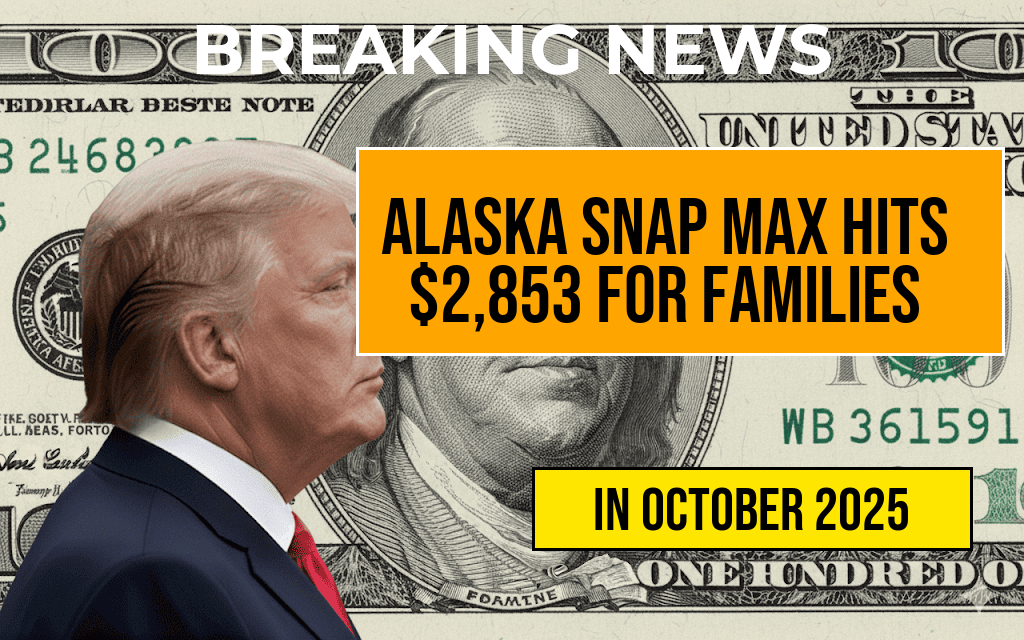In Alaska, families of six can receive a maximum of $2,853 through the Supplemental Nutrition Assistance Program (SNAP), a stark contrast to the national average of $1,421 for similar households in the contiguous United States. This significant disparity highlights the unique economic challenges faced by Alaskan residents, which are influenced by higher living costs, remote locations, and limited access to affordable grocery options. As policymakers and advocates continue to address food insecurity in the state, the large difference in SNAP benefits raises questions about the adequacy of support for families struggling to make ends meet.
The Economic Landscape of Alaska
Alaska’s economy presents a unique set of challenges that contribute to the high cost of living. The state’s isolation from the mainland United States means that transportation costs for goods are significantly higher, leading to inflated prices at grocery stores. According to the U.S. Department of Agriculture, many remote communities rely on shipments for their food supply, which can be both irregular and costly.
Comparative SNAP Benefits
The SNAP program aims to alleviate food insecurity by providing financial assistance to eligible low-income families. However, the benefits vary widely across different states due to factors such as local economic conditions and cost of living. The following table illustrates the stark contrast in SNAP benefits for families of six across various regions:
| Region | SNAP Benefit Amount |
|---|---|
| Alaska | $2,853 |
| Lower 48 (National Average) | $1,421 |
| California | $1,835 |
| Texas | $1,410 |
| New York | $1,701 |
Why $1,421 Is Insufficient
For families living in the contiguous U.S., the average SNAP benefit of $1,421 often falls short, especially in urban areas where the cost of living is increasing. The Federal Reserve Bank has reported that many households find it difficult to stretch SNAP benefits throughout the month, necessitating reliance on food banks or community resources.
Factors Contributing to High Living Costs
- Housing Costs: Rent and mortgage prices are rising, particularly in metropolitan areas where affordability is already a concern.
- Transportation: The cost of commuting often adds another financial burden, especially in cities where public transport may be limited.
- Healthcare Expenses: Families often face high healthcare costs that can divert funds from food budgets.
Implications for Policy and Assistance Programs
The disparity between SNAP benefits in Alaska and the lower 48 states raises critical questions regarding the adequacy of support for families. Advocates argue that current benefit levels do not reflect the actual cost of living in many areas, necessitating a reevaluation of how benefits are calculated and distributed.
Organizations such as the Feeding America network are working tirelessly to address food insecurity through food banks and community programs, but the need for systemic change remains pressing. Increased awareness and advocacy are essential to ensure that families receive the support they need to thrive.
Conclusion
The contrast between Alaska’s SNAP maximum of $2,853 for families of six and the much lower average of $1,421 in the contiguous United States highlights significant disparities in benefit allocations. As the cost of living continues to rise, understanding and addressing these differences is crucial for policymakers and community leaders aiming to combat food insecurity effectively.
Frequently Asked Questions
What is the maximum SNAP benefit for families of six in Alaska?
The maximum SNAP benefit for families of six in Alaska has reached $2,853.
How does Alaska’s SNAP benefit compare to the Lower 48 states?
In the Lower 48 states, the maximum SNAP benefit for a family of six is $1,421, which is significantly lower than Alaska’s benefit.
What factors contribute to the higher SNAP benefits in Alaska?
The higher SNAP benefits in Alaska are influenced by the state’s high cost of living, including expenses related to housing, food, and transportation.
Why might the SNAP benefit in the Lower 48 be insufficient?
The SNAP benefit of $1,421 in the Lower 48 may fall short due to rising costs of living and food prices, making it challenging for families to meet their basic needs.
How does the SNAP program support families in Alaska?
The SNAP program provides crucial financial assistance to families in Alaska, helping them afford nutritious food and alleviate hunger in a state with high living expenses.






